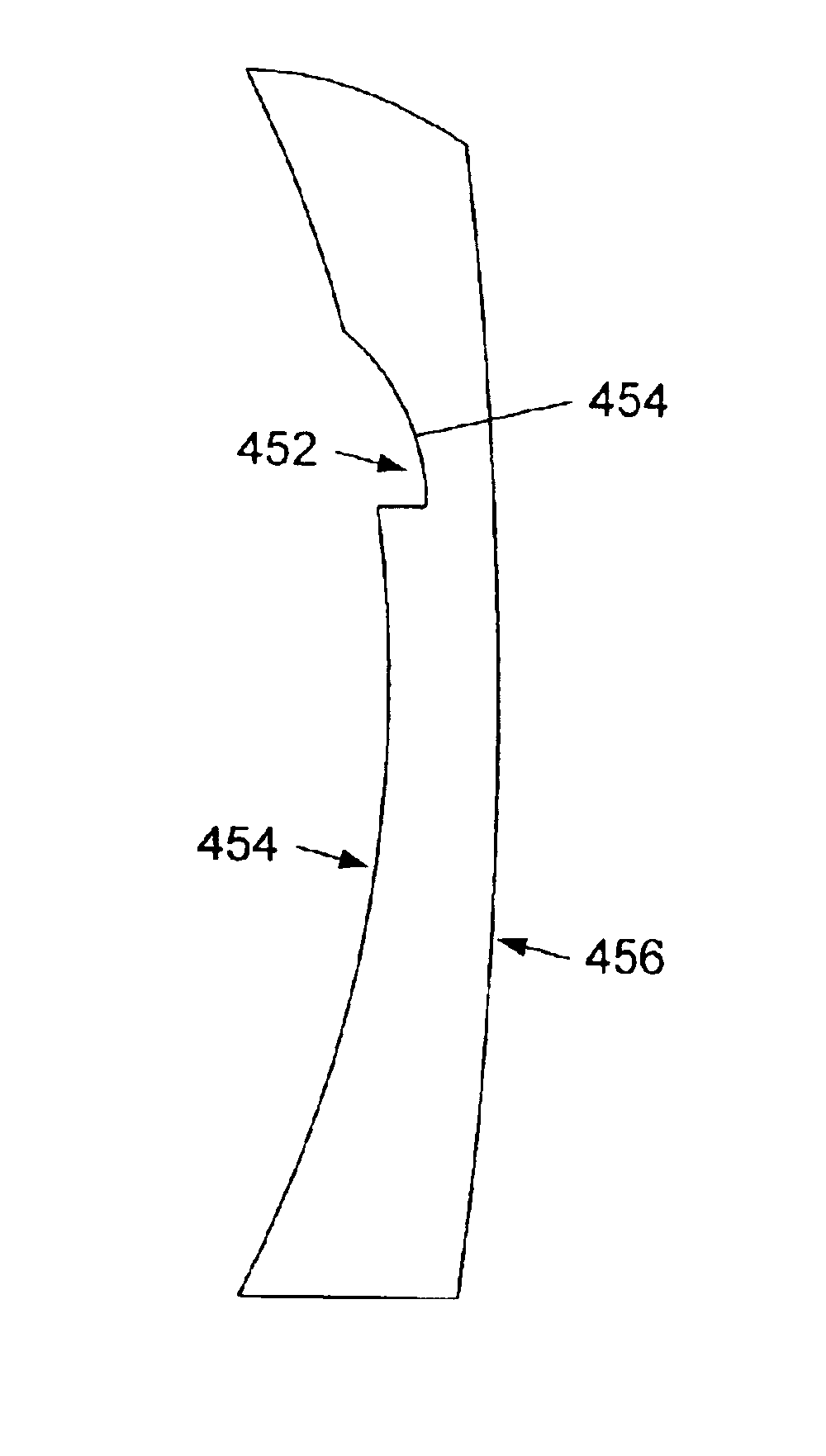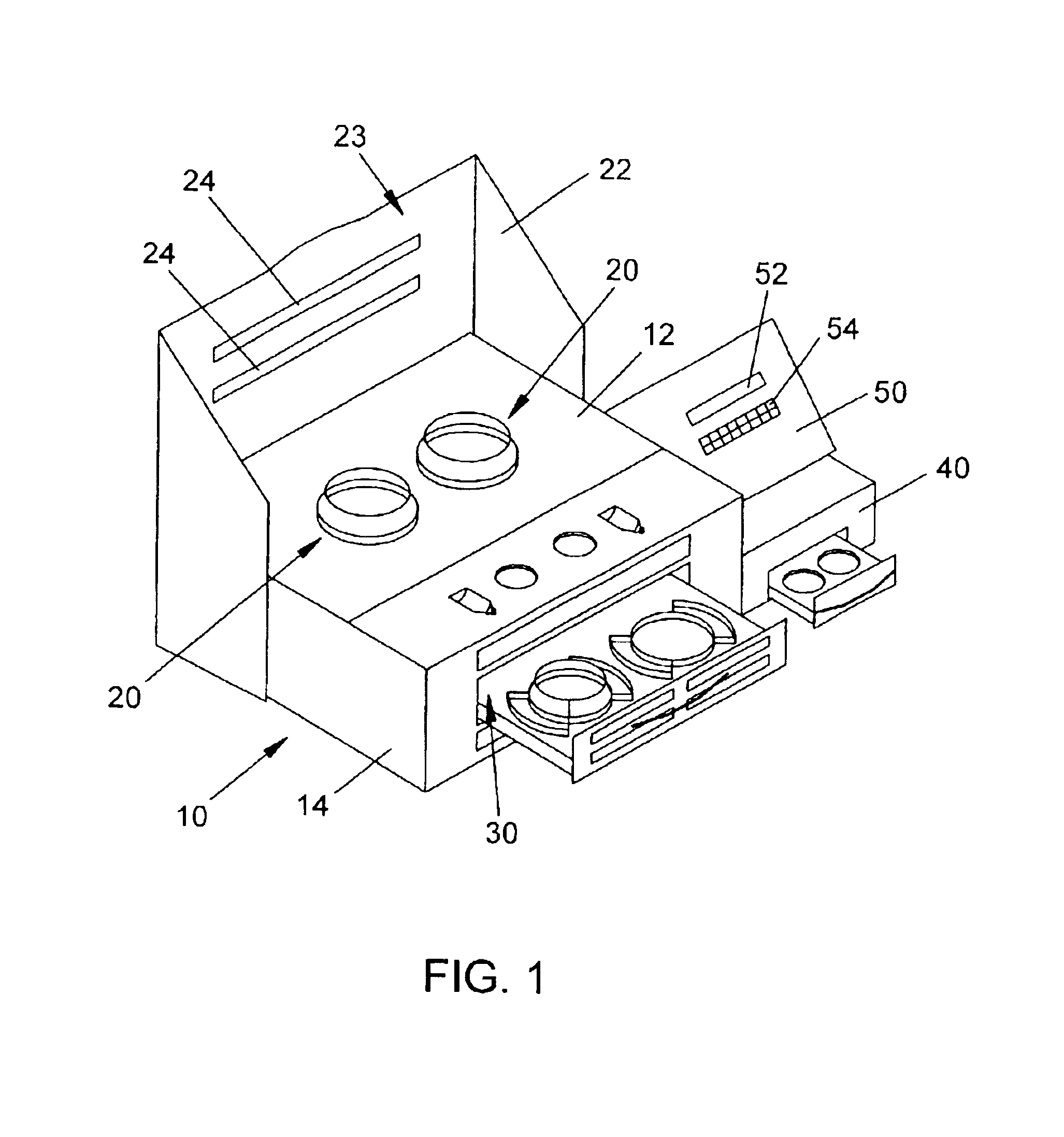Plastic lens system, compositions, and methods
a lens system and lens technology, applied in the field of eyeglass lenses, can solve the problems of lens yellowing, lens or mold cracking, optical distortion in the lens, etc., and achieve the effect of reducing the incidence of premature releas
- Summary
- Abstract
- Description
- Claims
- Application Information
AI Technical Summary
Benefits of technology
Problems solved by technology
Method used
Image
Examples
specific examples
[0479]The following examples are included to demonstrate embodiments of the invention. Those of skill in the art, in light of the present disclosure, should appreciate that many changes may be made in the specific examples that are disclosed and still obtain a like or similar result without departing from the spirit and scope of the invention.
example 1
Formation of a Plastic Lens by Curing with Activating Light
[0480]
Formulation:17%Bisphenol A bis(allyl carbonate)10%1,6 Hexanediol dimethacrylate20%Trimethylolpropane triacrylate21%Tetraethyleneglycol diacrylate32%Tripropyleneglycol diacrylate0.012%1 Hydroxycyclohexyl phenyl ketone0.048Methyl benzoylformateHydroquinone & Methylethylhydroquinone
Hydroquinone and Methylethylhydroquinone were stabilizers present in some of the diacrylate and / or triacrylate compounds obtained from Sartomer. Preferably the amount of stabilizers is minimized since the stabilizers affect the rate and amount of curing. If larger amounts of stabilizers are added, then generally larger amounts of photoinitiators must also be added.[0481]Light Condition: mW / cm2 measured at plane of sample with Spectroline DM 365N Meter from Spectronics Corp. (Westbury, N.Y.)
[0482]
CenterEdgeTop:0.2330.299Bottom:0.2170.248[0483]Air Flow: 9.6 standard cubic feet per minute (“CFM”) per manifold −19.2 CFM total on sample[048...
example 2
Oxygen Barrier Example #1
[0491]A liquid lens forming composition was initially cured as in a process and apparatus similar to that specified in Example 1. The composition was substantially the same as specified in Example 1, with the exception that hydroquinone was absent, the concentration of methylethylhydroquinone was about 25-45 ppm, the concentration of 1-hydroxycyclohexyl phenyl ketone was 0.017 percent, and the concentration of methylbenzoylformate was 0.068 percent. The composition underwent the initial 15 minute cure under the “1st activating light.” The apparatus was substantially the same as described for the above Example 1, with the following exceptions:[0492]1. The air flowrate on each side of the lens mold assembly was estimated to be about 18-20 cubic feet per minute.[0493]2. The air flowrate in and out of the chamber surrounding the lights was varied in accordance with the surface temperature of the lights. The air flowrate was varied in an effort to keep the temper...
PUM
| Property | Measurement | Unit |
|---|---|---|
| heat | aaaaa | aaaaa |
| time | aaaaa | aaaaa |
| abrasion resistant | aaaaa | aaaaa |
Abstract
Description
Claims
Application Information
 Login to View More
Login to View More - R&D
- Intellectual Property
- Life Sciences
- Materials
- Tech Scout
- Unparalleled Data Quality
- Higher Quality Content
- 60% Fewer Hallucinations
Browse by: Latest US Patents, China's latest patents, Technical Efficacy Thesaurus, Application Domain, Technology Topic, Popular Technical Reports.
© 2025 PatSnap. All rights reserved.Legal|Privacy policy|Modern Slavery Act Transparency Statement|Sitemap|About US| Contact US: help@patsnap.com



